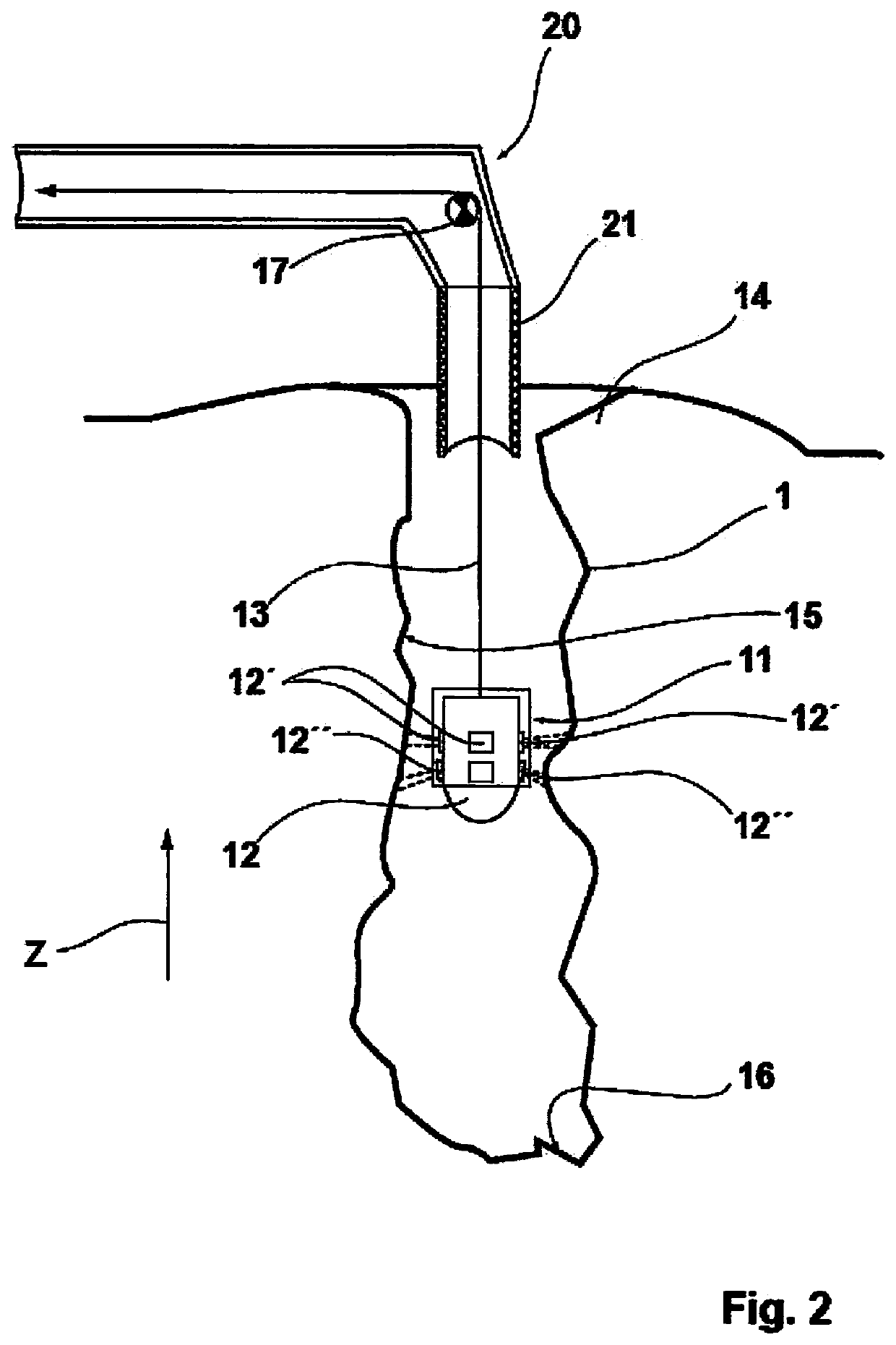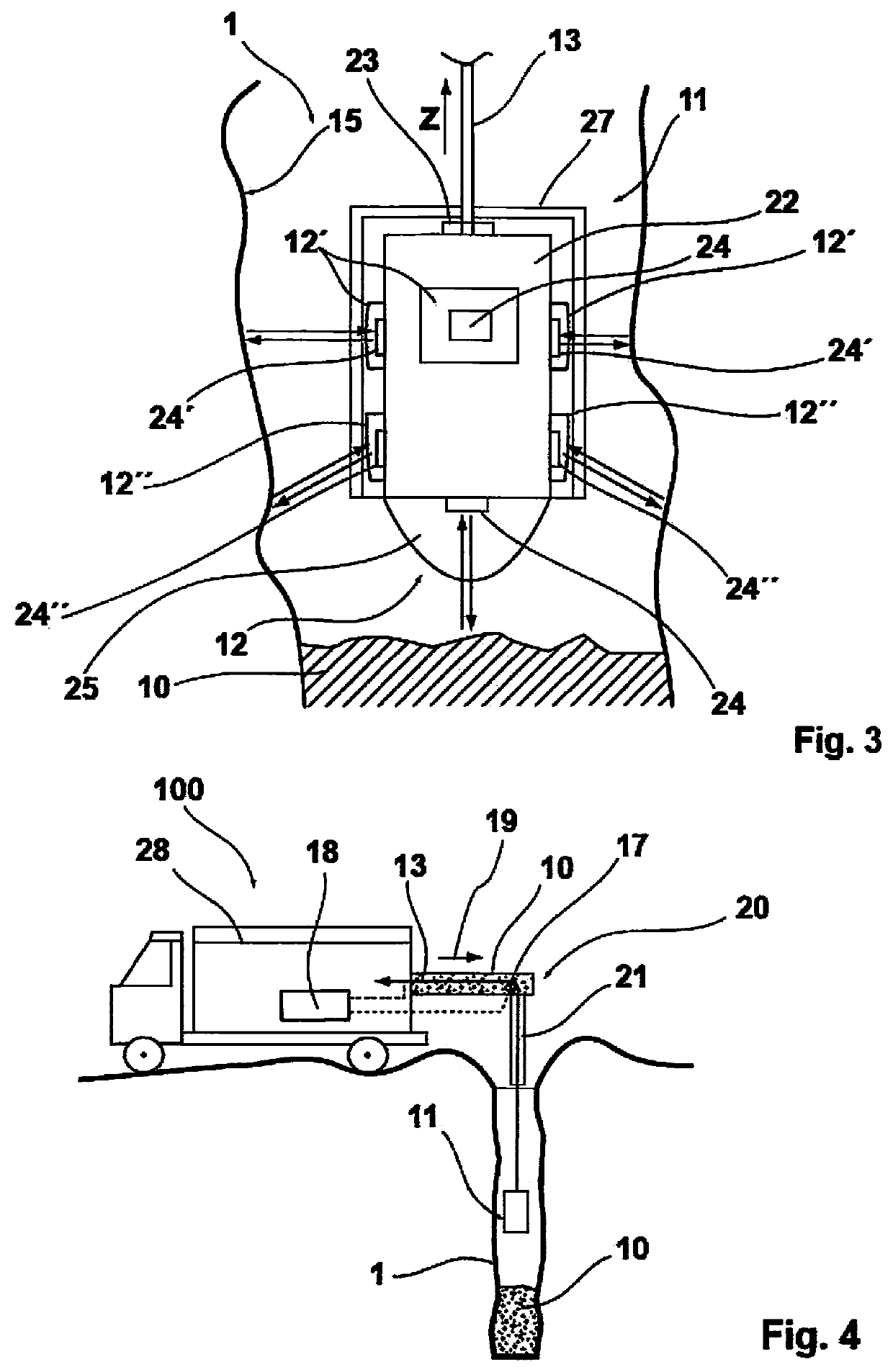Method and device for controlled filling and inspection of blast holes
a technology for controlled filling and inspection, applied in the direction of borehole/well accessories, survey, construction, etc., can solve the problems of large, non-detachable material pieces, and inability to reliably measure radar, etc., and achieve good results
- Summary
- Abstract
- Description
- Claims
- Application Information
AI Technical Summary
Benefits of technology
Problems solved by technology
Method used
Image
Examples
Embodiment Construction
[0046]FIG. 1 schematically illustrates a cross-sectional view of a blasting borehole 1 that extends downwardly in a vertical direction, for example, in a blasting field starting from an upper-side aperture opening 14 on a base surface of the blasting field down to a blasting borehole base 16. The blasting borehole 1 can be charged with explosive 10 starting from the blasting borehole base 16, with the illustration showing a lower part region of the blasting borehole 1 already charged with explosive 10 with a charge level h. The explosive 10 is charged into the blasting borehole 1 via means 20 for charging said blasting borehole 1, with the means 20 being arranged at a vehicle, for example.
[0047]A radar head 11, that can be lowered into the blasting borehole 1 to a lowering depth l is fastened to a pulling means 13 for this purpose and the pulling means 13 is led through a covering tube 21 that forms a lower part of the means 20 for charging the blasting borehole 1 with explosive 10....
PUM
 Login to View More
Login to View More Abstract
Description
Claims
Application Information
 Login to View More
Login to View More - R&D
- Intellectual Property
- Life Sciences
- Materials
- Tech Scout
- Unparalleled Data Quality
- Higher Quality Content
- 60% Fewer Hallucinations
Browse by: Latest US Patents, China's latest patents, Technical Efficacy Thesaurus, Application Domain, Technology Topic, Popular Technical Reports.
© 2025 PatSnap. All rights reserved.Legal|Privacy policy|Modern Slavery Act Transparency Statement|Sitemap|About US| Contact US: help@patsnap.com



